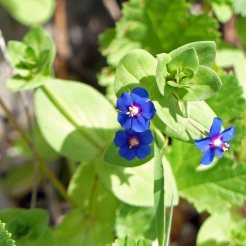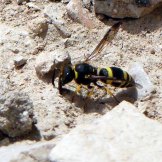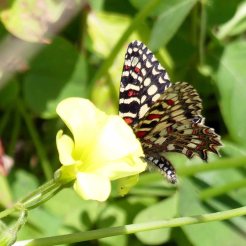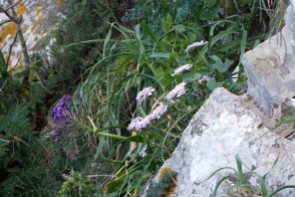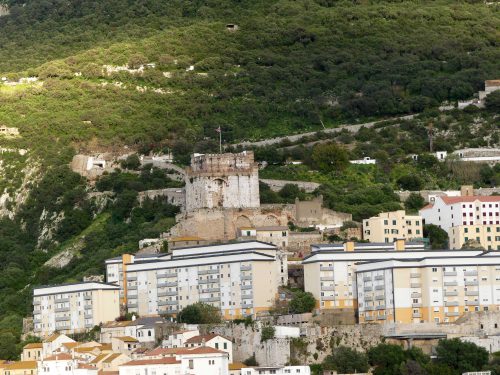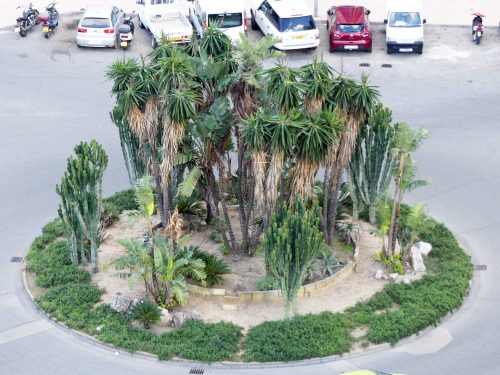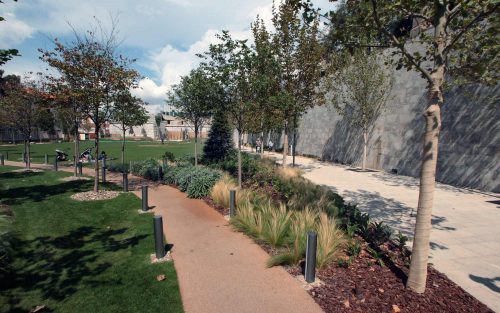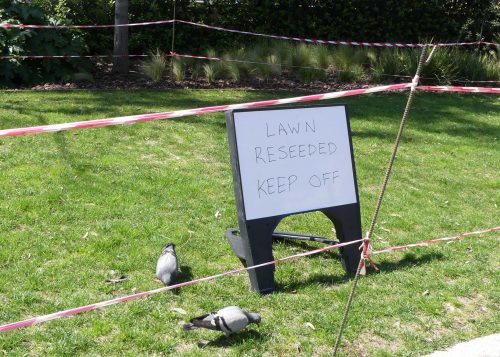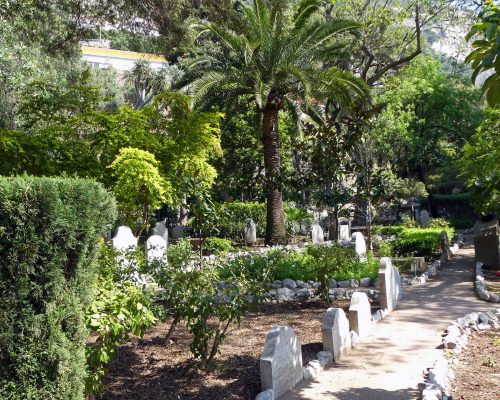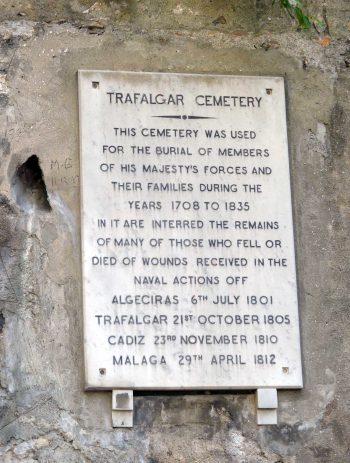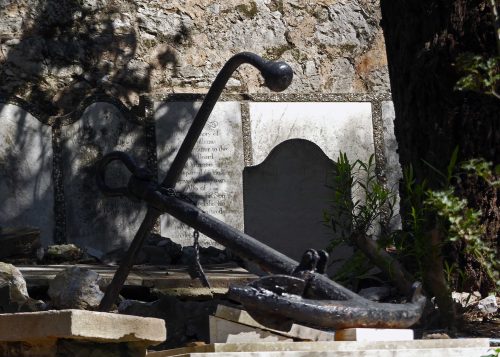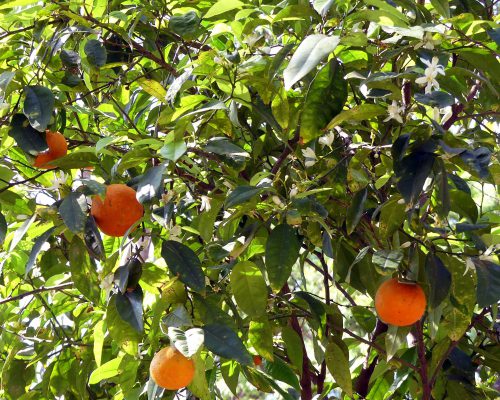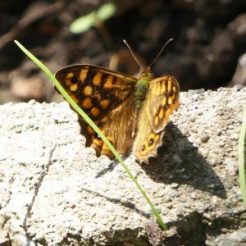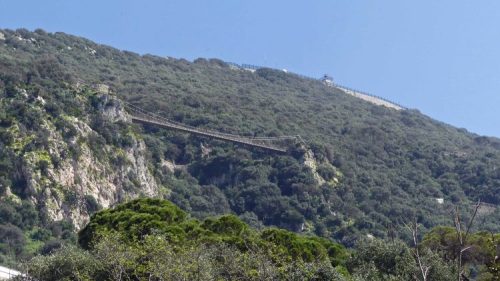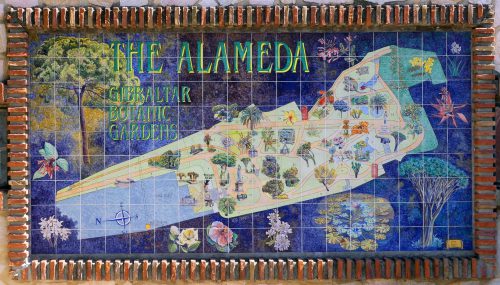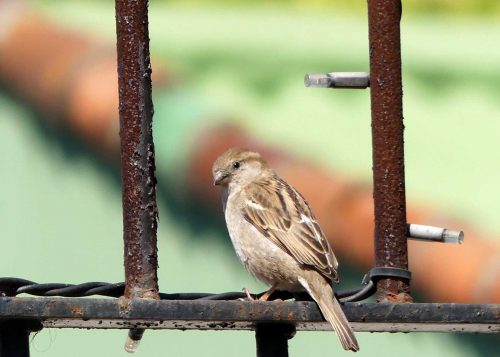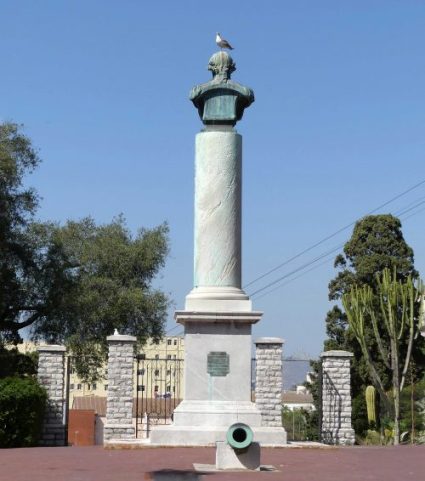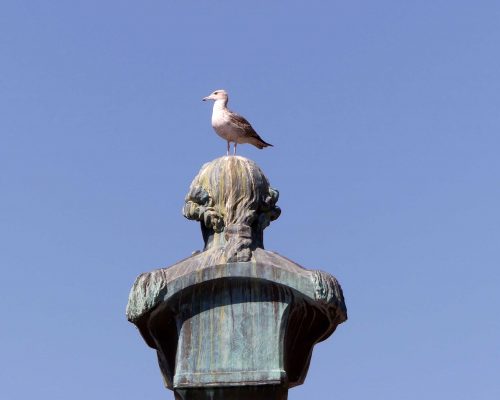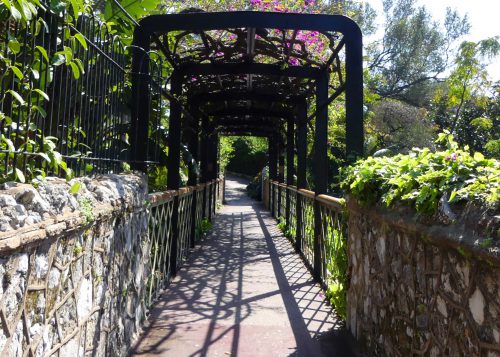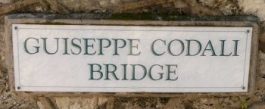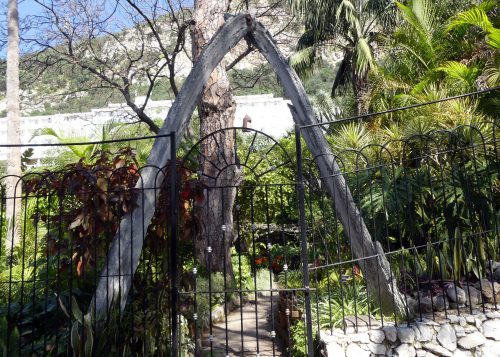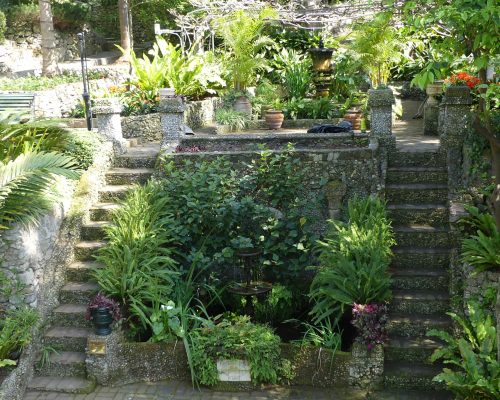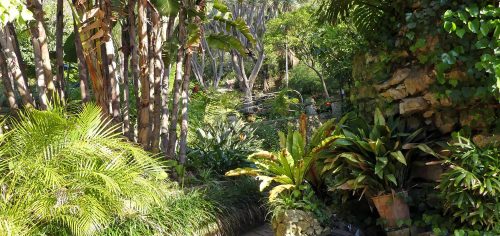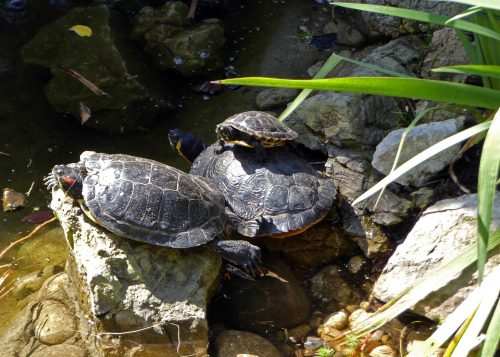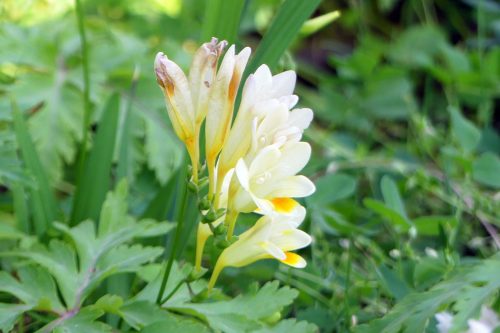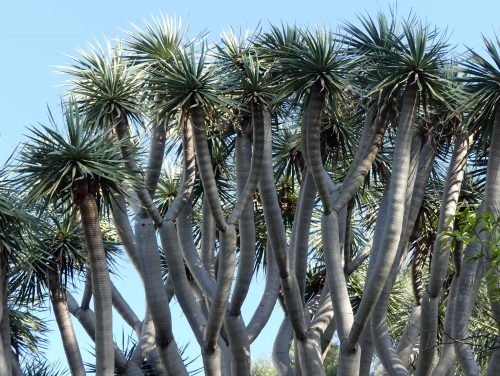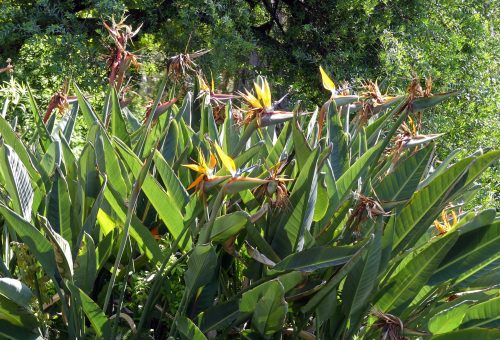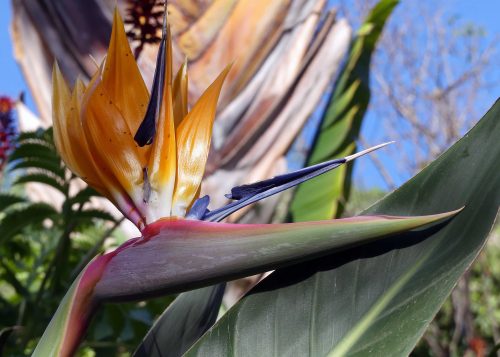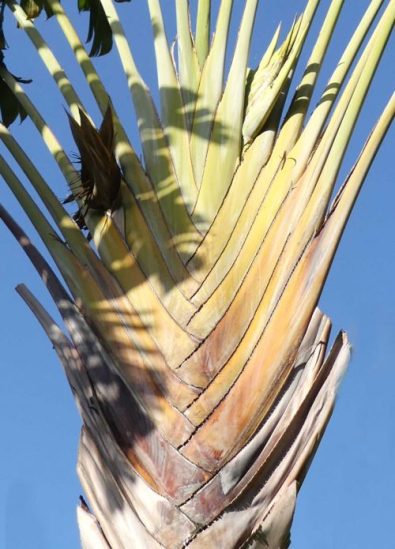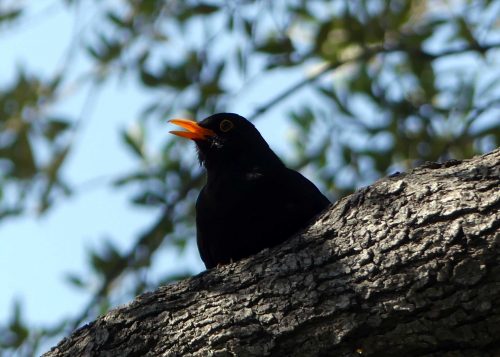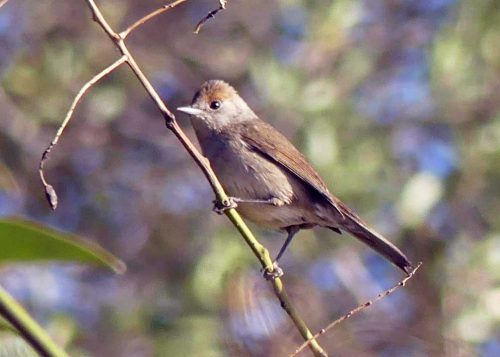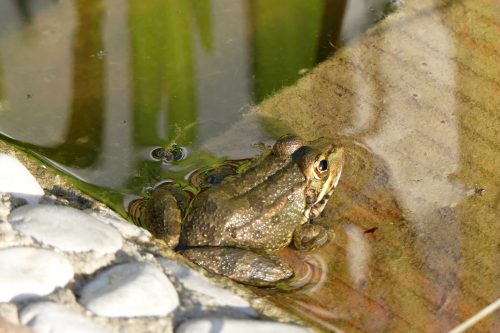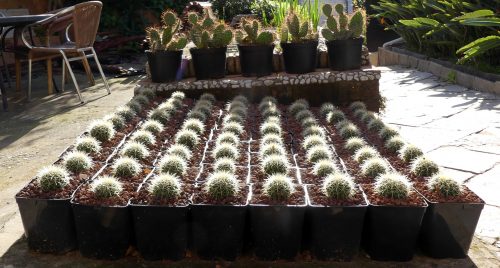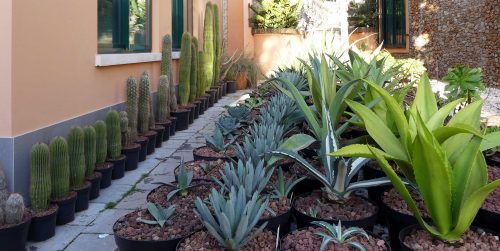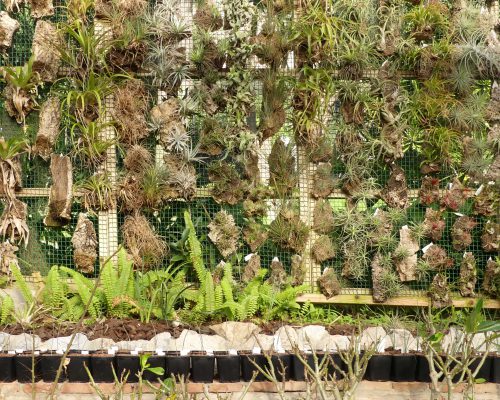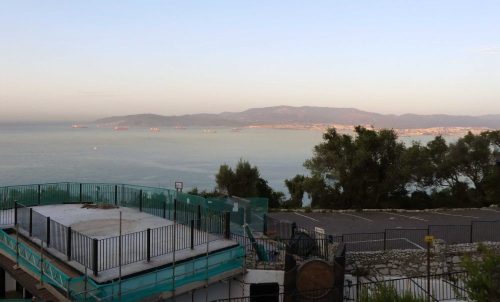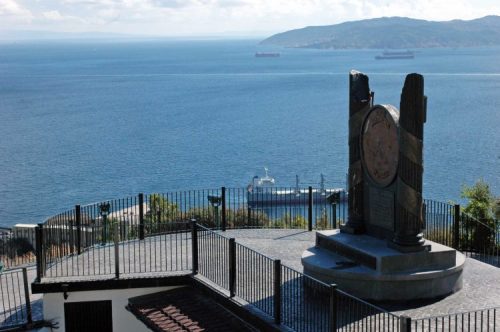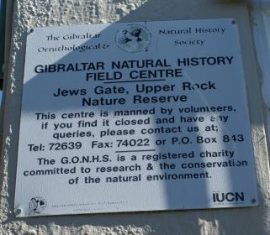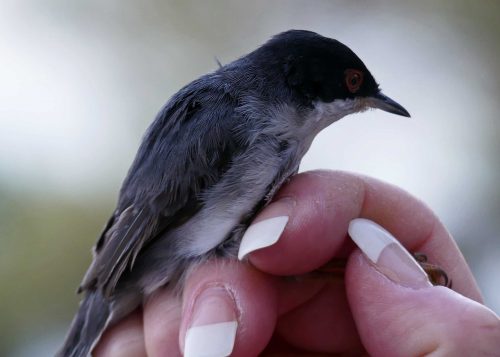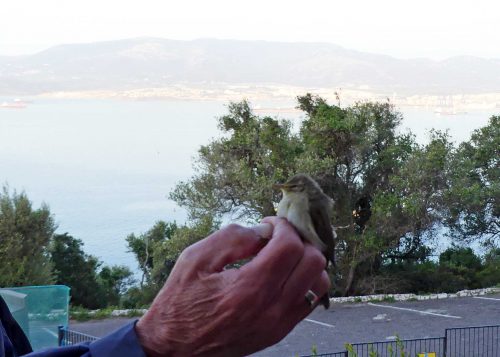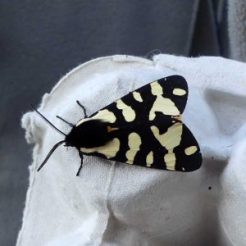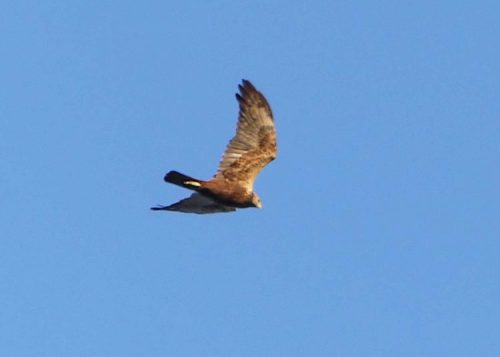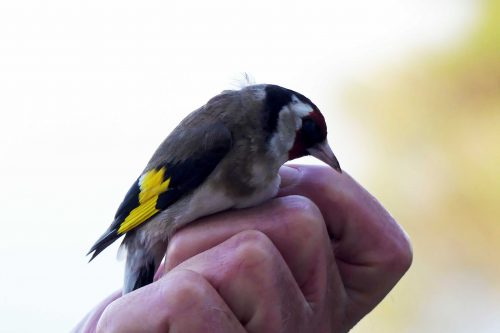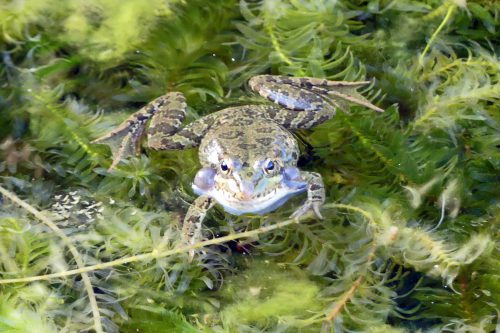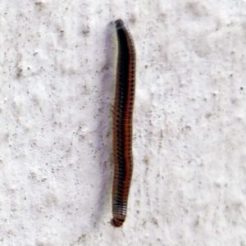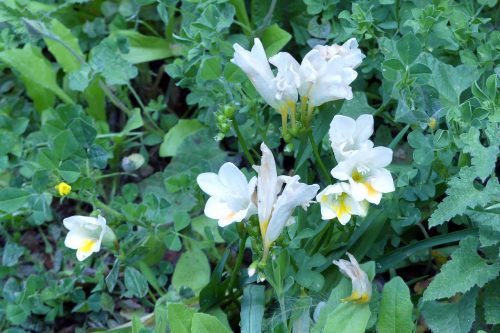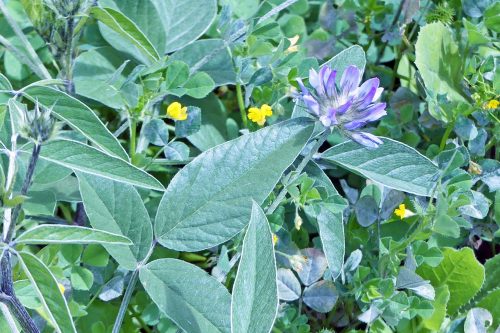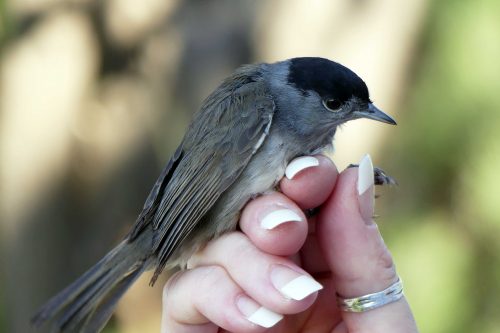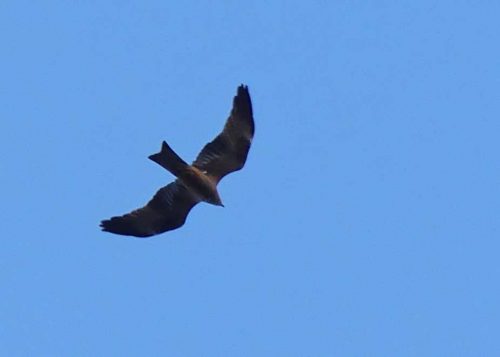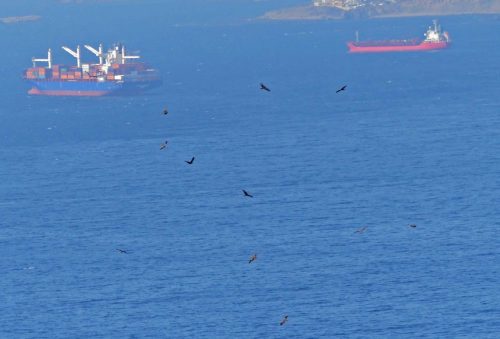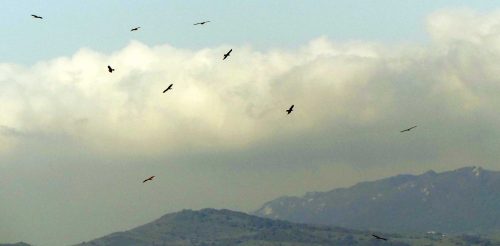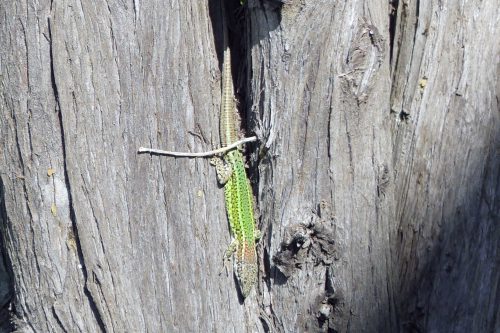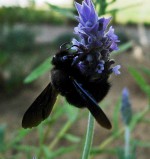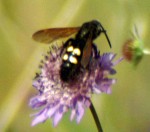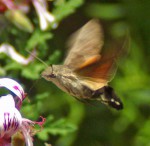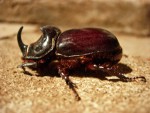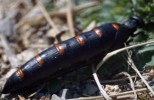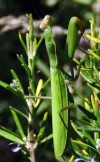March 22nd 2018
I can hardly believe it’s been a year since I was enjoying the Spring in Gibraltar; how time flies! Here in North Wales this afternoon the temperature is 9C, it’s windy and the humidity 76% – rain was predicted but so far has missed us. The BBC tells me it is 16C and the humidity 44% in Gibraltar, about the same as it was a year ago but it would seem not as windy as it was then. To cheer myself up while waiting for our Spring to arrive I thought I’d take a virtual trip back there recalling the spectacular walk I took on the Upper Rock on this day a year ago. I hope you enjoy it as much as I did.
March 22nd 2017
Early morning and we were back at the Bird Observatory at Jew’s Gate on the Upper Rock. As on previous days the wind blowing from the north was still preventing returning birds from travelling this way: a little disappointing, but I had other plans for the day and was keen to get going. I was going to take a walk along the Mediterranean Steps path. It’s a challenging trail, about 1.5km long and as it warns in the name, quite a bit of it involves climbing steps. It’s not recommended for anyone of faint heart or with vertigo, but if you are fairly fit it is more than worth the effort. The views are truly spectacular, there are some rather special birds you may be lucky enough to catch a glimpse of, but for me it’s mostly about the wonderful array of wildflowers that flourish here, many of which are at their best in the Spring.
11:30 Once on the path the bulk of the Rock gave complete shelter from the wind and it was warm and sunny, perfect conditions for my style of walking – leisurely ambling punctuated with frequent stops to take photographs. From the outset there were plants to stop and look at. Many were familiar to me but I hadn’t seen them for a few years and already they were bringing back happy memories. This walk was going to occupy me for some hours to come!
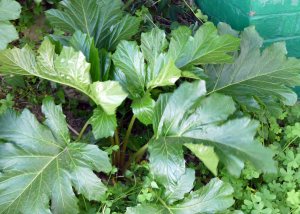
Bear’s Breech – Acanthus mollis
Bear’s Breech, Acanthus mollis was the first plant to catch my eye. Often valued as a garden plant, in the wild it spreads like wildfire to the detriment of other more desirable native plants, and is all too common in all habitats throughout the Rock. The plant’s strikingly handsome leaves were often replicated as architectural embellishments, particularly around the capitals of Corinthian columns.
Then Butcher’s Broom with large red berries that intriguingly sit in the centre of the thick leathery leaves. The plant is so-called as the stiff stems were tied together to make a broom or brush; perhaps especially favoured by butchers for sweeping the sawdust from their shop floors.
The leaves of the plant twining around the stems of the Butcher’s Broom belong to the Pipe Vine, also known as Dutchman’s Pipe both names due to the shape of its flowers. Nearby another climbing/twining plant had reached its way to the top of a shrub. This was Rough Smilax, a harsh name for a plant I think is rather attractive with its glossy heart-shaped leaves that are red-bronze when new. It may be so-called as the stems are equipped with hooked spines to aid climbing.
A member of the lily family, Common asphodel will have been flowering for a while now and is developing fruits.
The bright lime green-yellow of Spurge provide the perfect background to the blue of this gorgeous Giant Squill.
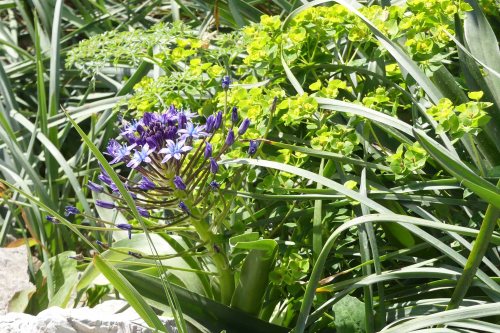
- Warty Spurge-Euphorbia squamigera & Giant Squill-Scilla peruviana
The dramatic Giant Squill flowers are past their best now, but still look good to me. The lovely Spurge is Warty Spurge, so-called as its fruit capsules are covered in rough little bumps that clearly made someone think of warts.
To begin with the vegetation on either side of the path is quite dense perfectly suiting a Sardinian warbler that was making its way along through the shrubbery, he popped out every now and then but not for long enough to photograph. Soon the vegetation thinned and opened up the spectacular view that demanded to be admired; I was happy to oblige. The North African coast, just 12 miles (14km) away across the Strait was obscured by mist today: when it’s clearer the mountain of Jebel Musa and the town of Ceuta which is 5km to the south of it, are easily visible. Down below is Europa Point; the Mosque is visible in the far left corner of the photograph.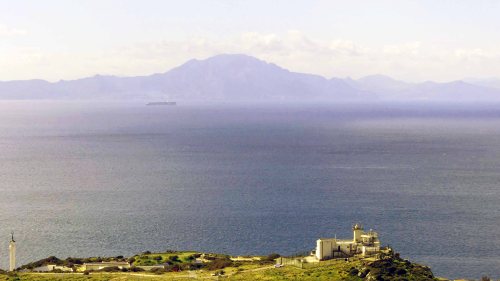
The path is narrow and uneven with loose stones and exposed rocks, another reason to take it slowly! It is bordered with lush dense vegetation, much of which is evergreen, tough and perfectly adapted in a variety of ways to survive and thrive in the harsh conditions it is exposed to year round.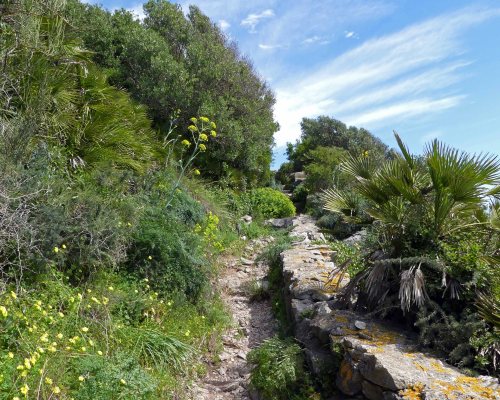
It’s quiet and peaceful here for much of the time, the hustle and bustle and noise of the town could be a million miles away from here. It’s not silent though: the accompanying sounds of gulls are almost constant and can get rather raucous at times. Hundreds of Yellow-legged gulls populate Gibraltar and you can’t go far without encountering one or two. As with their northern cousins, the similar-looking Herring gulls they are not well-loved by many. They mercilessly mob migrating raptors which they perceive as potential threats to their young and of course they have to be kept at bay from the airfield. Seen closely and in a wilder habitat you can’t deny they are handsome and characterful birds though, can you? At the side of the path this pair of gulls were using the wall as a look-out post. They probably have a nest-site staked out close by and there’s a lot of competition for good nesting sites here.
Below me a squadron of gulls appeared relaxed, but doubtless at least a few of them were on look-out for potential aerial threats or interlopers, including any passing migrant raptors; it would take very little to launch them squawking into the air.
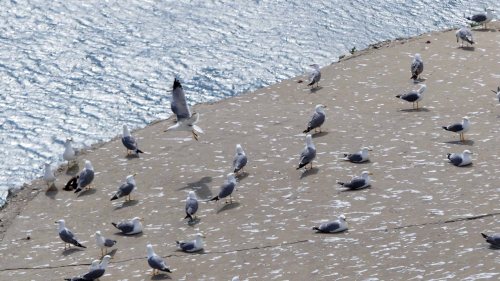
The Dwarf Fan Palm is the only palm native to Europe. Common throughout the Rock, their dramatic architectural fronds bring a touch of the exotic to the vegetation.
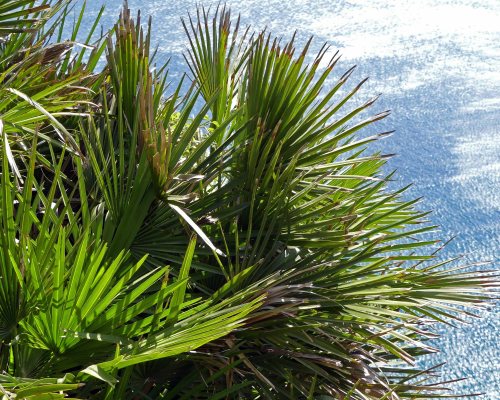
Dwarf Fan Palm-Chamaerops humilis
Although much of the vegetation is tough and hardy, for a few short weeks an array of more delicate-looking wildflowers have their chance to flower and set seed before the heat of the sun because too intense and the summer drought sets in. There is Rose Garlic, seen here growing through leaves of the Giant Tangier Fennel and the dainty Greater Soft Storksbill.
Blue Pimpernel, the southern version of our Scarlet Pimpernel is one of my favourites. I caught a Bee-fly taking nectar from a little yellow flower I didn’t know, but later found it to be Succowia, which is a member of the mustard/cabbage family.
There were two pretty bindweeds; the Small blue convolvulus was a lucky spot as it’s really more tiny than small. The larger Mallow-leaved bindweed with pink flowers is more noticeable.
There are some scenes you walk into which would be my idea of the perfect Mediterranean garden. Here there is Wild Olive, Osyris, Dwarf Fan palm, Spurge, Scorpion vetch, Tree germander and more filling every available inch of space.
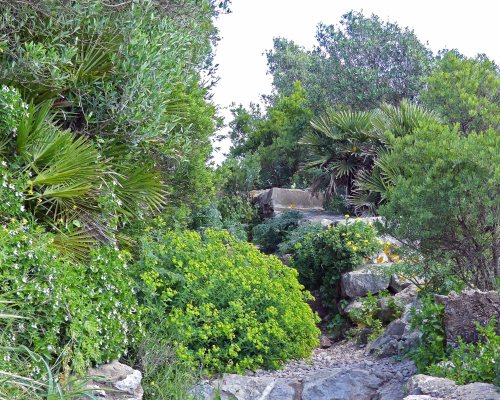
Tree or Shrubby germander is another shrub often cultivated in gardens. It’s a lovely shrub with pretty flowers much loved by bees and much tougher than it looks.
12:10 already and I’d made hardly any progress, there had been so much to see. This stop was to savour the delicious scent of the golden broom.
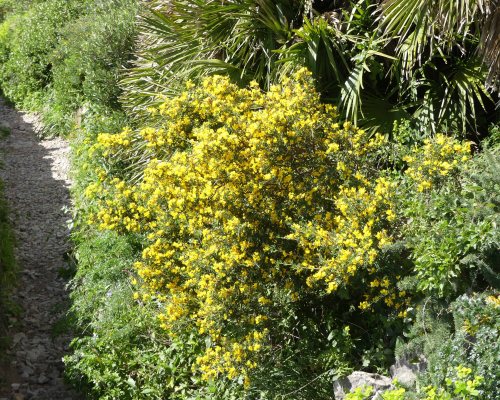
- Spiny broom – Calicotome villosa
Nearby, a similar looking but smaller and softer shrub is also fragrant; Shrubby Scorpion vetch. It takes its common name from its seedpods – they are …. and resemble a Scorpion. I think its Latin name Coronilla valentina is much prettier.
My eyes were drawn upwards where a great number of Yellow-legged gulls were up in the air circling and making a tremendous racket. Every white spot in my photograph is a bird, not dust on the lens!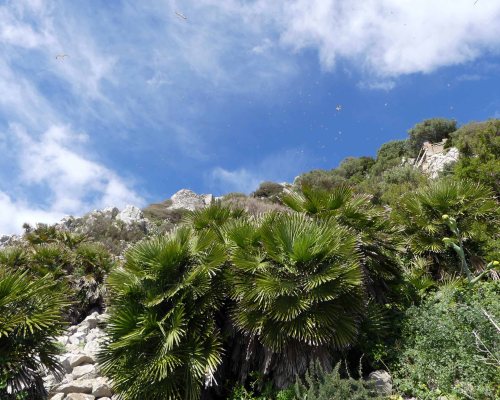
A single gull looked out from a rock outcrop above me.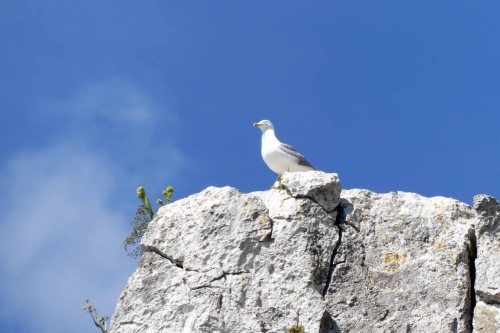
A significant plant I haven’t mentioned yet is the Giant Tangier Fennel – a wonderfully architectural plant that towers over your head and leans in to frame many a view out to sea.
12:15 – I reached the section of the path where steps lead down the cliff a way- this bit needs a bit of care and attention as to where you’re putting your feet.
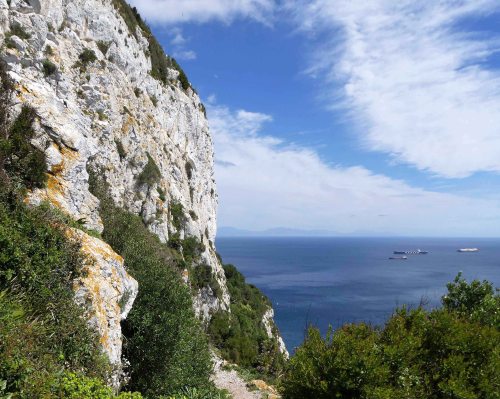
170322-GIBMS48-1215-Reaching cliff face
I’d been watching out for butterflies and finally saw some here. There was a beautiful male Cleopatra flying back and forth constantly; as is their wont, he didn’t settle at all. More obliging was one of several equally lovely Spanish Festoons. It was flitting from plant to plant, I don’t know why, I wondered if it was a female ovipositing, then at one point it seemed to be sucking up honeydew from clematis leaves.
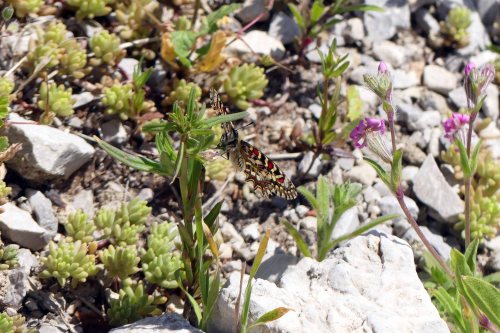
Spanish Festoon-underside
In the foreground of the larger image is the back of the Pink Mediterranean Catchfly-Silene colorata. This pretty little plant only opens its flowers completely from evening-time to the early morning.
Many plants find a home in fissures of the limestone cliff, in this group are Sea daisies, Wall helichrysum & Giant squill.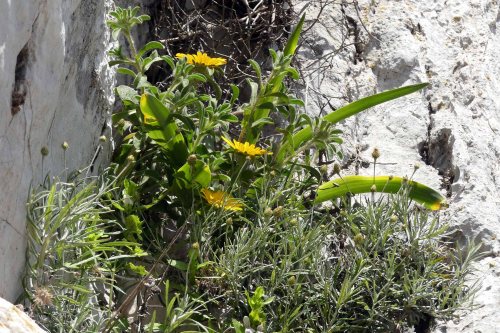
On the stony ground below was Rough bugloss.
Behind it at the foot of the cliff a large Dwarf Fan palm backs Giant fennel and a patch of Alexanders.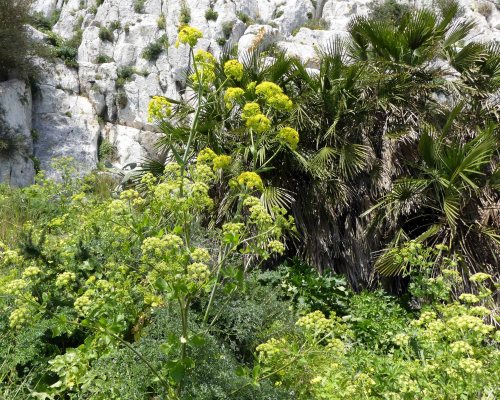
Another fresh Spanish Festoon
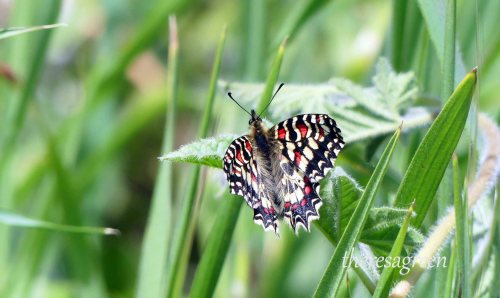
Spanish Festoon – Zerynthia rumina
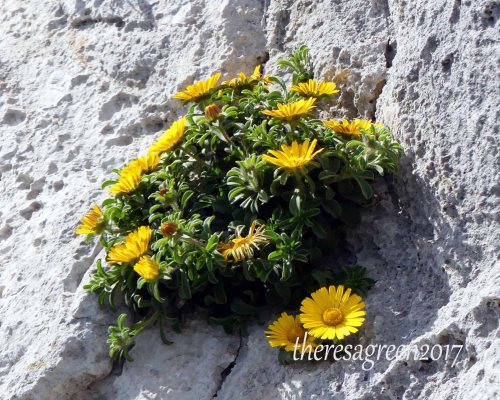
Sea Daisy-Asteriscus maritimus
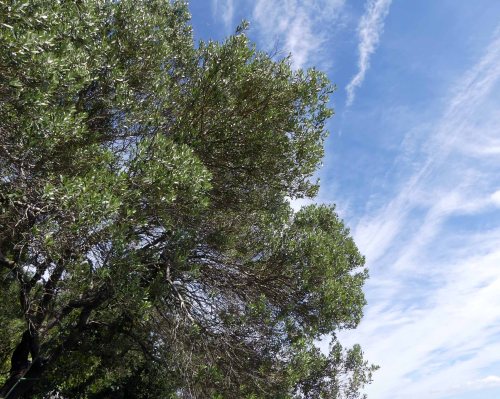
A Wild Olive tree – Olea europaea
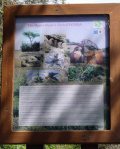 12:47 I had still only reached the bottom of the steep steps that lead up to Martin’s Cave, where a board gives more information about The Upper Rock’s Varied Wildlife. I would have liked to have seen a few more birds, especially a Barbary partridge or a Blue Rock thrush, but this is not the best time of day to see them and also I’d met or been overtaken by quite a few people which would have sent them into cover too. The flowers have more than compensated for their lack.
12:47 I had still only reached the bottom of the steep steps that lead up to Martin’s Cave, where a board gives more information about The Upper Rock’s Varied Wildlife. I would have liked to have seen a few more birds, especially a Barbary partridge or a Blue Rock thrush, but this is not the best time of day to see them and also I’d met or been overtaken by quite a few people which would have sent them into cover too. The flowers have more than compensated for their lack.
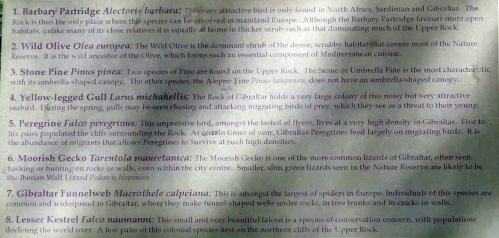
12:48 Ready to tackle the steps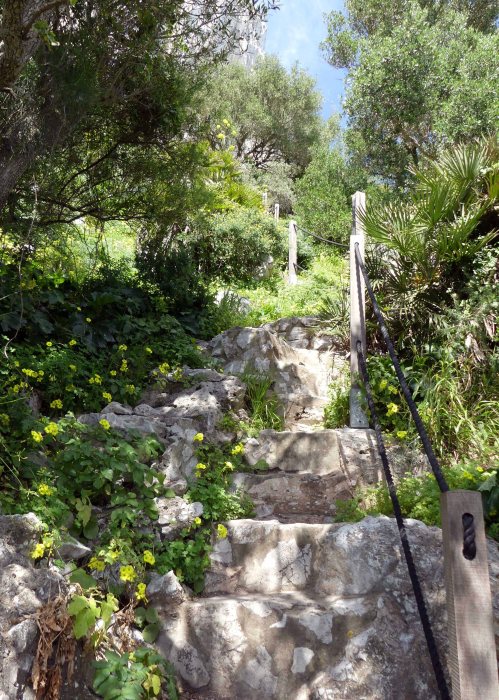
12:52 – First stop to look back at the way I’d just walked around the edge of the cliffs.
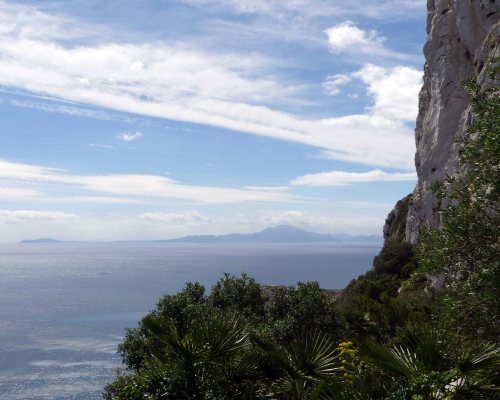
and then at the view slightly further round with tankers waiting out at sea
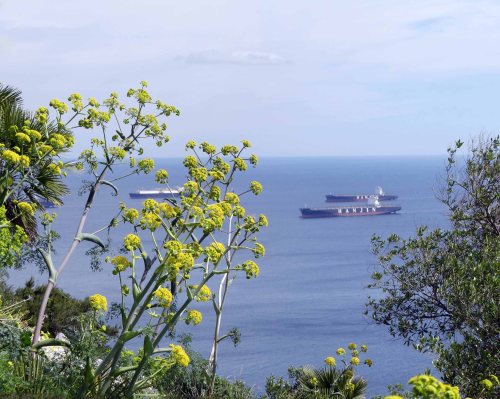
On the approach to the cave I’d spotted some busy bees and wasps. A Paper wasp (polistes sp.) on Alexanders looked as though it may have successfully hunted and was eating something.
12:58 A good view of the Europa Point Lighthouse, also known as the Trinity Lighthouse down below
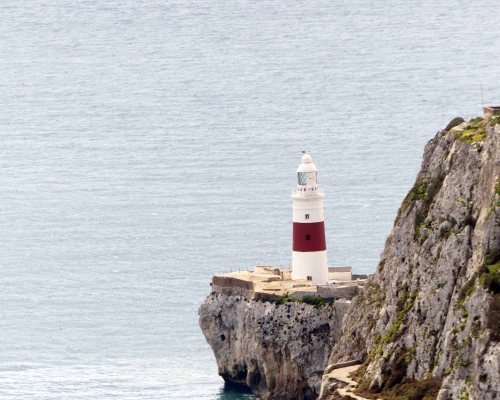
I found Tree Mallow here, the Common Mallow I’d photographed a bit earlier below the steps.
13:02 I had stopped in front of the cave for a lunch break and just to sit and admire the view and watch what was going on around me. I didn’t sit still for long as I saw or heard things that caught my attention. A little wasp, a potter or a mason, was busy collecting earth which it would make into building material for a container in which to lay eggs.
I heard Wrens singing from a couple of spots nearby but try as I might I couldn’t see one.
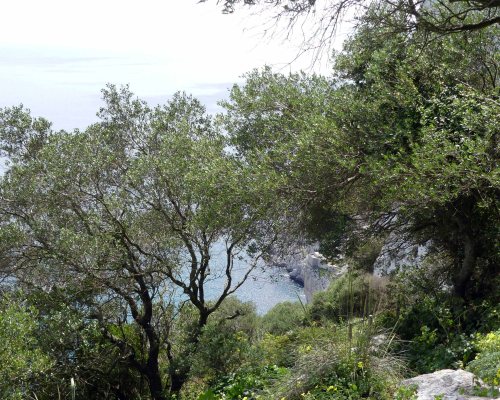
Olive, Osyris, Bear’s Breech & Bermuda buttercup with Esparto grass in the foreground
13:36 An Osyris shrub with orange fruits.
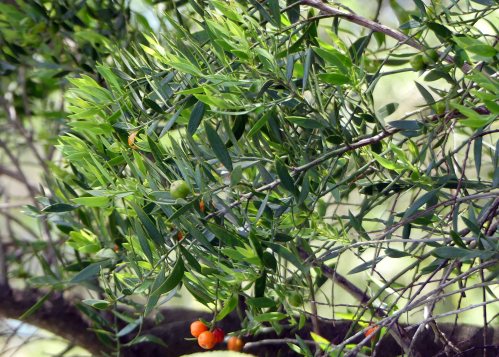
Osyris quadriparita
There’s a lot of Bermuda Buttercup up here. Also known as Cape Sorrel, it is another invasive ‘alien’ that spreads rapidly, particularly where ground has been disturbed, but it doesn’t seem to do any damage to native plants and it’s a great source of nectar for insects through several months early in the year.
13:40 Looking down onto the glittering Mediterranean Sea
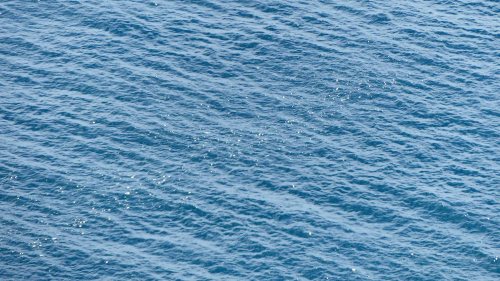
A Squirting Cucumber plant was growing from the corner of a step and a Prickly pear had taken hold at the side of the path, growing through more Bear’s Breech.
13:50 From here on the walking gets more strenuous on the way to the top. The steps continue and lead to the Goat’s hair Twin Caves. It’s hard to imagine that these caves would once have been at sea level.
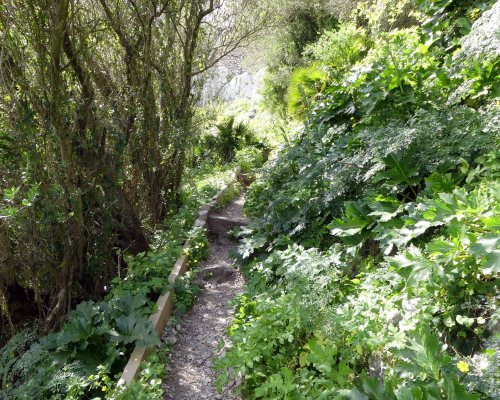
Along this stretch were Slender Sow thistle and a stem of Branched Broomrape, which is parasitic on the Oxalis it is growing amongst.
13:56 At the top of this flight of steps the path passes through a short World War 2 tunnel.
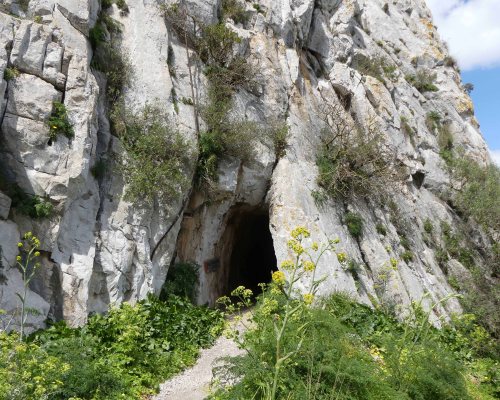
Growing from the rock on the Tunnel’s side was a pretty group of Sea daisies and Sweet Alison. Sweet Alison is a common plant here in Gibraltar and on mainland Southern Spain, but every time I see it it reminds me of British summer bedding displays – garden borders edged with alternate white Alison & blue Lobelia.
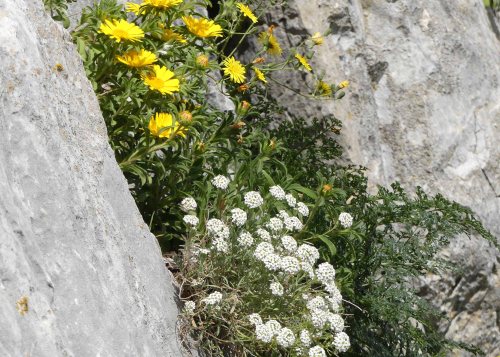
- Sea daisies & Sweet Alison – Lobularia maritima
Light at the end of the tunnel.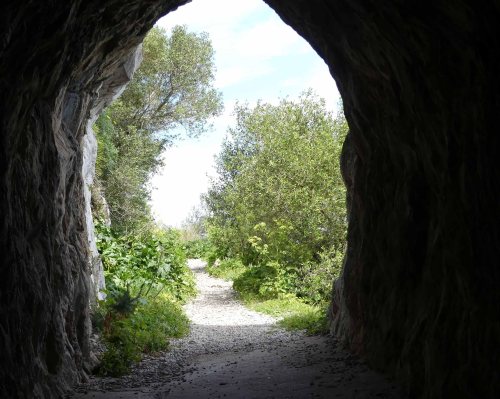
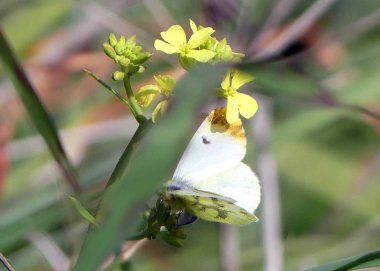 By the side of this stretch of path was another butterfly, a female Moroccan Orange Tip. The females are similar in appearance to our northern Orange Tips, but the males 14are bright yellow instead of white.
By the side of this stretch of path was another butterfly, a female Moroccan Orange Tip. The females are similar in appearance to our northern Orange Tips, but the males 14are bright yellow instead of white.
On a plant of the mustard/cabbage family, the butterfly was ovipositing (laying an egg) – these are the food plants of the species larvae.
14:01 I was happy to see a Wall Lizard venture out on a rock to warm itself in the sunshine. (Andalusian Wall Lizard Podarcis vaucheri )
More Giant squill with a stem of Wall barley grass.
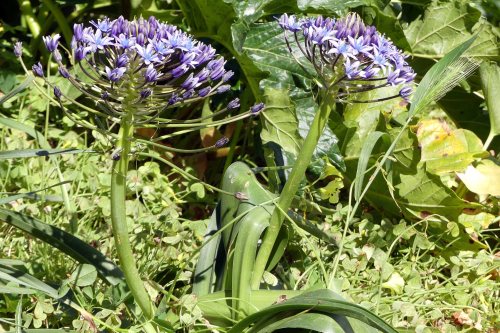
14:10 – A bit higher up and a stunning view across to the Costa del Sol.
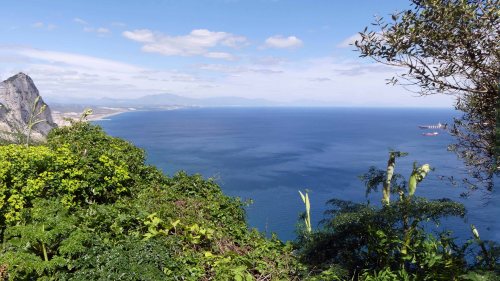
Another superb view looking north along the east face of the Rock down onto Sandy Bay and along to Spain and the coast of the Costa del Sol. Directly above the Bay were the now disused Water Catchments. The slope on which they sat is the Great Gibraltar Sand Dune, an ancient consolidated sand dune. Rainwater flowed down the slope into an open channel which fed into the reservoir system inside The Rock. In 2001, the Gibraltar Ornithological and Natural History Society began to oversee the dismantling of the catchment construction. By 2006 the slope was fully restored to its natural state and is now being recolonised by vegetation native to this unique habitat.
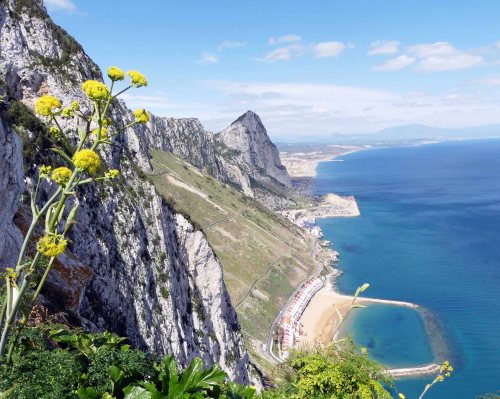
Further round to the north of Sandy Bay is Catalan Bay.
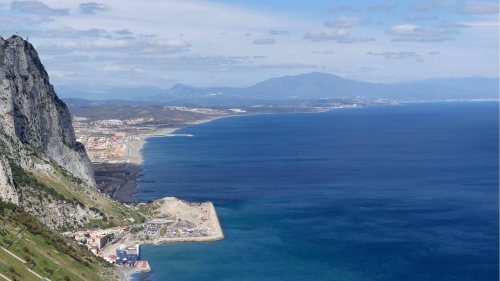
14:15 There’s a little building up here, built by the military for use as a gun emplacement or observatory. It certainly has a wonderful view.
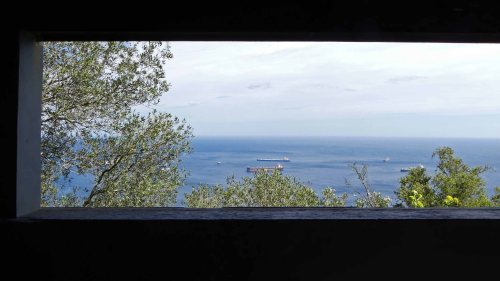
There were a few scattered patches of one of Gibraltar’s special plants up here; the Gibraltar Candytuft. Not the best examples, but at least I found some.
Another lizard scuttled across the concrete
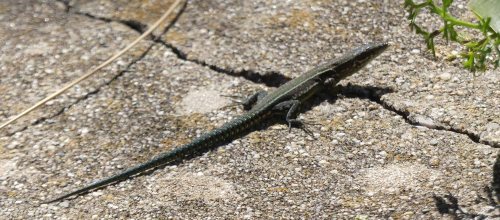
Podarcis vaucheri-Andalusian Wall Lizard
A Yellow-legged gull tilts its head to look skywards
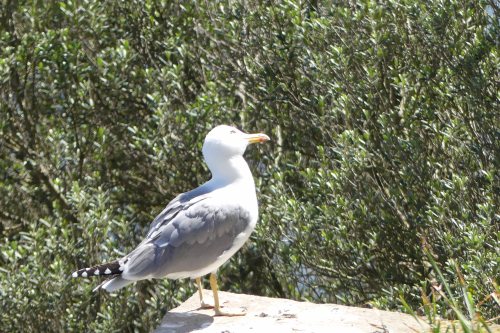
14:22 Another fairly gentle upward section of path.
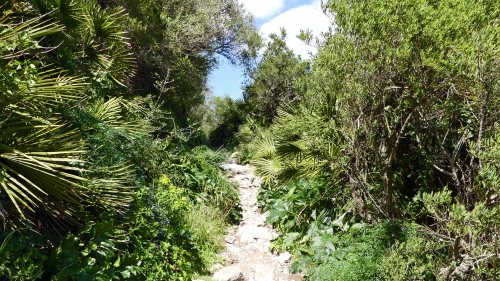
14:24 Looking down onto the vegetation and the little building I just left.
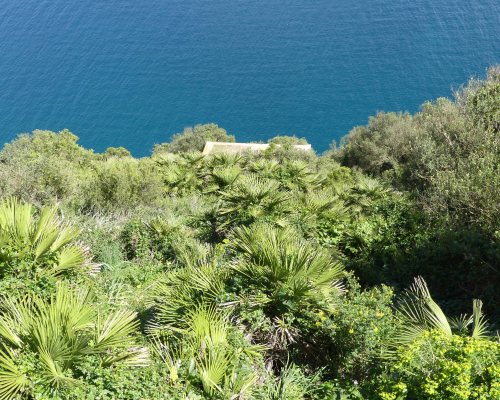
A patch of pretty Intermediate Periwinkle
14:27 Another straight stretch passing by a large Shrubby Scorpion vetch that smelt lovely.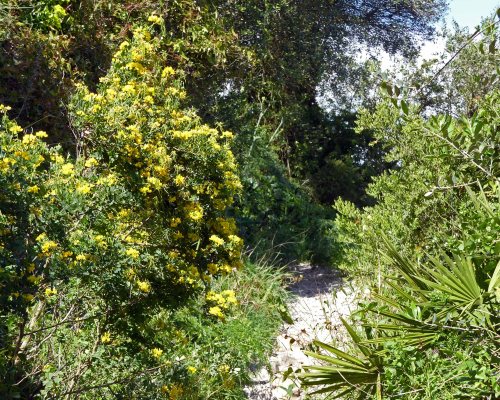
Then on the cliff edge this huge Prickly Pear cactus
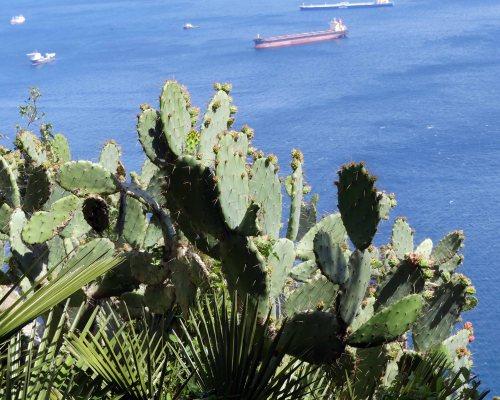
14:34 A long steep set of steps to climb, but getting closer to the top.
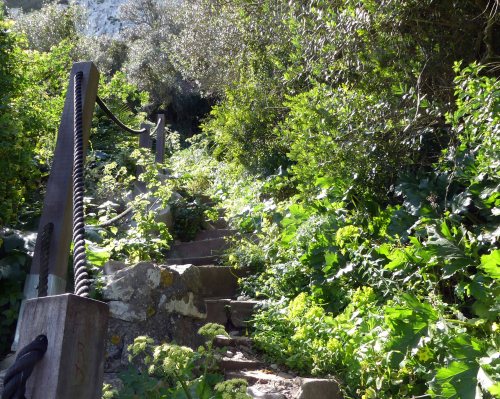
I love this view of a gull that was sitting on a rock above looking over its edge.
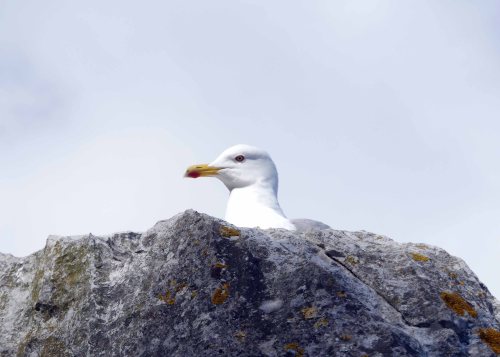
14:43 And yet more steep steps.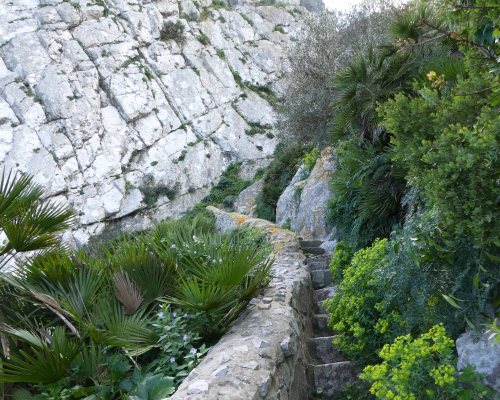
A junction of cliff face, rocks and man-made walls.
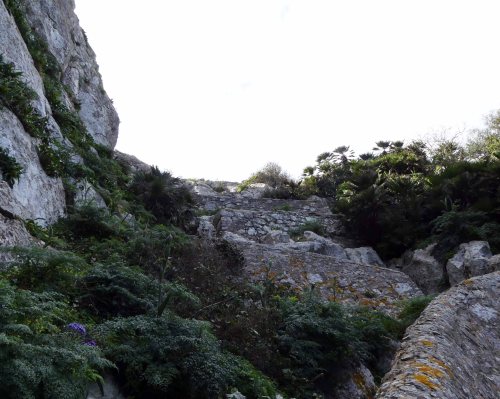
14:48 The final flight of steps!
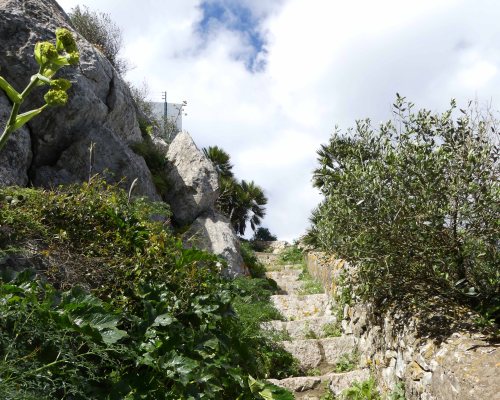
At the top a Red Admiral butterfly sunbathes on a warmed rock.
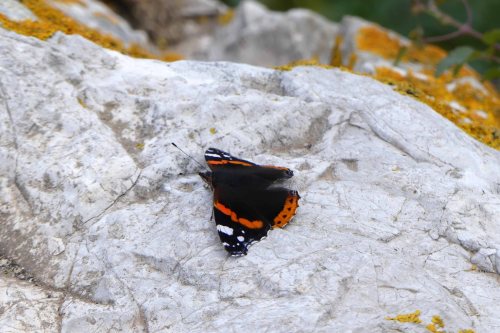
14:50 The view from the top is spectacular!
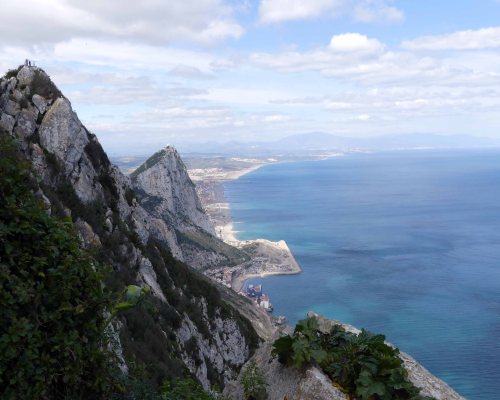
From the top of the Rock looking down onto Catalan Bay and out to the Costa del Sol
The estimated time for this walk is 2 hours. My amble took me 3 hours and 20 minutes, but as you can see I made a lot of stops. The steps weren’t that painful!
Credits & links
My friend Jill
My well-used copy of The Flowers of Gibraltar compiled by Leslie Linares, Arthur Harper and John Cortes ISBN: 84-7207-088-3
For comprehensive information about the flora you’ll find it here: http://floraofgibraltar.myspecies.info/
For more information about any of the wildlife of Gibraltar you’ll find it here on the Gibraltar Ornithological & Natural History Society (GONHS) website: https://www.gonhs.org/














